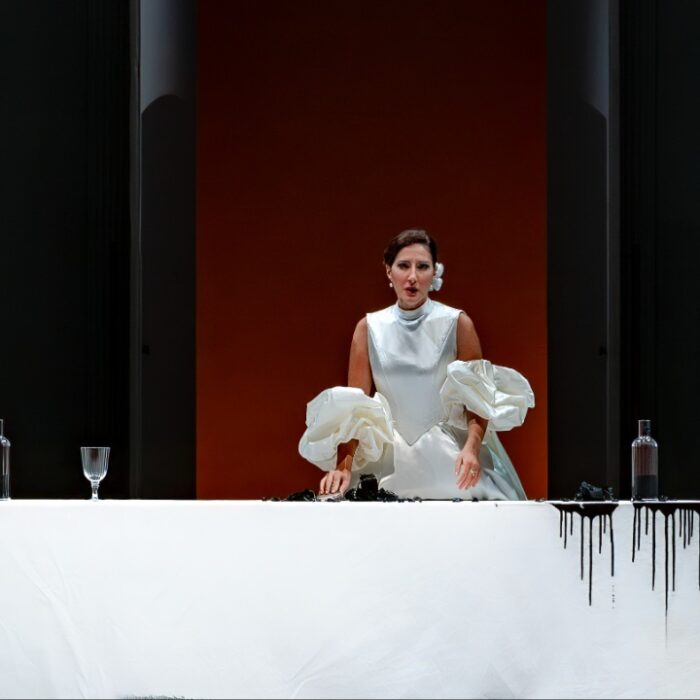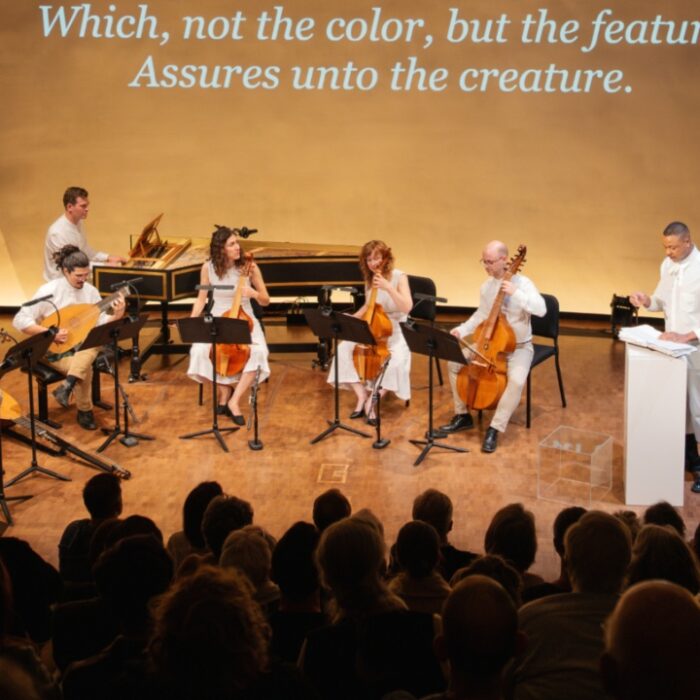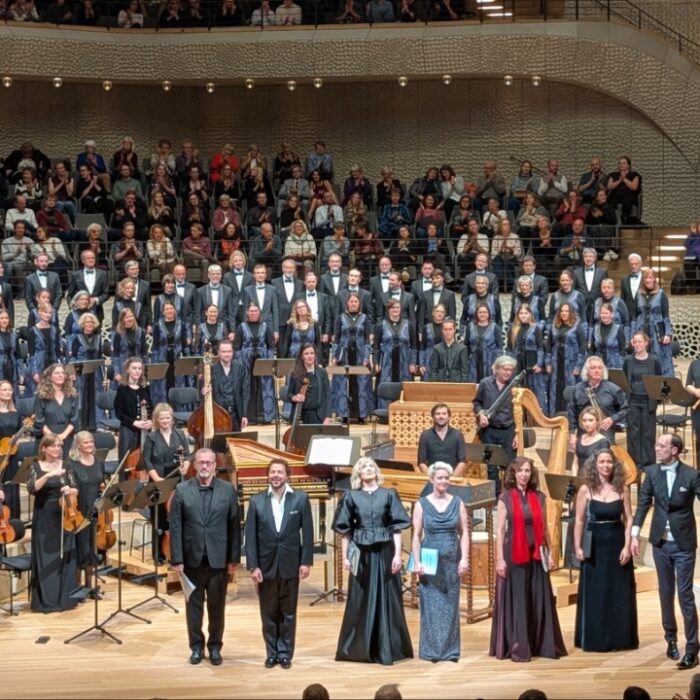
Metropolitan Opera Stars Live in Concert Review: Jonas Kaufmann in Polling, Bavaria
Superstar Tenor Navigates Peaks & Valleys In Successful Series Debut
By David Salazar(Credit: Gregor Hohenberg / Sony Classical)
When the COVID-19 pandemic shutdown the entire planet, the Metropolitan Opera was among the first companies to realize the potential of streaming operas to audiences worldwide.
With its massive catalogue of opera recordings from both this century and the last, the company set out to present performances on a nightly basis.
Other companies caught on, with several branching out into a variety of different offerings. As Europe opened up, live streaming performances became a possibility for many companies, albeit with continued social distancing protocols.
Last Saturday, the Metropolitan Opera formally announced, via press conference with several of opera’s greatest stars, that it would be jumping into that arena with its “Met Stars Live in Concert series.”
And this afternoon, the vision came to life with a concert starring superstar tenor Jonas Kaufmann from the library of the historic Polling Abbey in Bavaria.
The showcase was hosted by soprano Christine Goerke, who as previously announced, will be a mainstay of every concert in this 12-part series. She was joined briefly by General Manager Peter Gelb for a brief introduction to the concert series.
An Uneasy Start
Kaufmann and pianist Helmut Deutsch joined forces for a program featuring 12 major arias from the French and Verismo repertory. Goerke called it “an operatic cake with a lot of icing.” Some of the icing worked better than others.
Things got off to a shaky start from a technical perspective with the audio dropping out at the beginning of “Recondita Armonia” but the performance of this aria and the ensuing “E lucevan le stelle” were major highlights of the concert with Kaufmann at his very best musically and vocally.
Where “Recondita” was energized and forceful, “E lucevan le stelle” was gentle and intimate. Particularly memorable was “o dolci baci languide carezze,” where Deutsche’s piano matching Kaufmann’s threadlike pianissimo singing note for note; it was the kind of chamber music magic reserved for the recital hall and generally not heard in this repertory.
These two arias were Kaufmann at his very best and it was interesting, especially in hindsight, that the program took a quick detour into a decidedly different style of music.
Whether he was managing some cold or allergies, or the shift in repertory was far from comfortable for the tenor, Kaufmann struggled through a gauntlet of four French arias from “Carmen,” “Roméo et Juliette,” “L’Africaine,” and “Le Cid.” Coarseness would set in during many of the softer phrases with some of the pianissimo high notes, which had sounded so glorious in “E luce van le stelle” moments earlier, lacking the same level of ease. The breadth of line was missing as well, with Kaufmann seemingly rushing through several phrases.
One could hear and see the tenor increasingly clear his throat with each subsequent aria and his singing became increasingly restless and unsettled (it didn’t help that right after a very troubled rendition of “Ah! lève-toi, soleil,” audiences were presented with a clip of Kaufmann in a 2014 production of “Werther,” easily one of the finest moments of his Met career, and one of the greatest interpretations of any opera at the Met in this century).
“La fleur que tu m’avais jetée,” the first aria he sang in this block, was probably the best of the set with Kaufmann providing an expansive reading, especially on the climactic high B flat and subsequent “Je t’aime.”
A Solid Finish
While it was clear that whatever ailed Kaufmann during the French arias was not going away, he definitely managed the situation better during the second half of the program. One could immediately hear it in “Cielo e mar,” where the tenor’s voice sounding increasingly confident and poised as the aria progressed with the final high notes examples of peak Kaufmann – precise, controlled, but thrilling.
He was even better in the brief “L’anima ho stanca” from “Adriana Lecouvreur, his singing finding a freedom in the lines. The aria is rather direct and predictable in its dynamic and emotional progression, but that doesn’t make it less thrilling when it is executed with the virtuosity Kaufmann displayed. His voice transitioned from a gentle whisper on the opening lines to a forceful and grounded quality in the closing lines, his voice crescendoing throughout.
The tenor then walked away, allowing for Deutsch to take centerstage for the first of two occasions. Here he presented a glorious rendition of the Intermezzo from “Manon Lescaut” and later in the program, he would present a riveting interpretation of the Intermezzo from “Pagliacci.” Deutsch, who is Kaufmann’s go-to pianist, performed both pieces with a sense of clarity and drive; there was breadth in his line, but always in the service of the emotional build inherent in both pieces.
While he was far from just an accompanist in the other pieces of the recital, there is no doubt that on some level, it might have been easy to overlook him as Kaufmann moved from iconic aria to the next. When the tenor seemed troubled and came in late during one passage of the “O leve-toi soleil,” the pianist adjusted beautifully to put the two back on track. At the close of the concert, the camera caught a wonderful two-shot of the two performers both with mouths agape as Kaufmann prepared for the final “Vincerò” at the close of “Nessun Dorma.”
After the “Manon Lescaut” Intermezzo, Kaufmann returned to the stage with a very pronounced clearing of his throat and the two launched into “Ombra di Nube” by Licinio Refice. The tenor managed this piece quite well overall, particularly the gentle piano lines which, despite some dryness in spots, were exquisite.
He grew more animated in the ensuing numbers, especially “Un dì, all’azzurro spazio,” where his singing also took on a corresponding freshness and vibrancy. While he cut short an early and harsh-sounding climactic high note, the repetition at the end of the aria was far freer and more confidently delivered.
There can be no doubt that Kaufmann’s finest moment on the concert came during “È la solita storia” from “L’Arlesiana.” Here the tenor’s artistry and storytelling was on full display, his delicate and melancholy opening lines taking on more and more weight as the piece progressed. The second stanza of the aria, while retaining softer dynamics in its initial phrases, took on a more tragic tone with Kaufmann’s voice sobbing with each note, building to a devastating interpolated high note and an equally pained “mi fai tanto male! Ahimè!”
Kaufmann and Deutsch then closed out the concert with “Nessun Dorma,” before the tenor spoke directly to the audience, calling for others to provide support for artists who have not been given the opportunity to perform throughout these challenging times. At one point, he noted his own intent to pledge $5,000 “from my own pocket.”
Technical Choices
In between the live performance, the Met included clips and highlights of past performances from the star tenor in such operas as “La Fanciulla del West,” “Werther,” “Die Walküre,” and “Pagliacci.”
The choice was an interesting artistic one. On a practical level, it gave Kaufmann some repose from the arduous marathon of arias. But from an artistic perspective, it allowed audiences a fuller portrait of Kaufmann not only as a singer but also as an actor. It also provides a dose of nostalgia and reminder to the viewer of what they are missing and why.
And while these interludes add visual variety and shift the pace for the audience, they also started to get a bit repetitive. Once you looked at the program and its own structure, it wasn’t hard to see where the interludes might appear. For variety’s sake, it might have been just as interesting to mix up these digital recordings with videos detailing the venue, or delving deeper into the series. Perhaps even a pre-recorded talk with the tenor regarding his recent experiences might have spiced things up.
The performance was filmed with six cameras and directed by Gary Halvorson. Those familiar with the Met Opera’s Live in HD series will be familiar with the visual style employed throughout this concert with swooping crane and jib shots stitched together with quick cutting to create a sense of constant energy throughout the performance. And while the wider shots captured the beauty of the venue, you were left wondering whether there might have been an opportunity to let the audience immerse themselves in this historic place more than they were allowed. After all, one of the major selling points of the series was the fact that these iconic artists would be performing in correspondingly famed venues.
Ultimately, this concert series is a solid endeavor by the Met Opera and it should be interesting to see how they evolve over the coming months. It cannot be overlooked how daunting this task must be for an artist. The big factor here is the lack of an audience in the space. Opera singers feed off the public’s energy. It gives them a focal point to which they can directly communicate. Audience energy and enthusiasm pushes artists to their very best. In this kind of setting, that major asset is not available to an artist. On that front, Kaufmann’s performance was a solid success, the tenor’s energy palpable throughout.
Next up will be soprano Renée Fleming, live from Washington D.C. on August 1, 2020.


